E-mails have a very important place for everyone who has an active life. Whether in business life or education life, e-mails are in every aspect of our lives. Although there are now multiple options for communicating with someone thanks to tech, they are still indispensable. In this article, we will talk about Google Gmail search operators for people who still use e-mail.
Almost everyone nowadays knows how to do a basic Gmail search. However, these basic search options may not be enough for people who need e-mails more actively in their lives. Because these users, who may need their e-mails at any time in their active lives, require much faster and specific solutions. In this context, Gmail operators are a great option for those who want to increase their e-mail productivity. Gmail search operators will offer you a very fast solution in this regard. So let’s get started now.
Why Are Gmail Search Operators So Important?
Do you sometimes get lost among your e-mails in the chaos of your active life? Do not worry. Because this is something that can happen to any of us. In fact, I’m sure many people experience it often. However, there is a solution to this, thanks to Gmail search operators. These operators provide a much more practical solution to finding the specific emails you need. You don’t need to waste any more time on your e-mails, which you can find faster and easier than before. Thanks to search operators, you will be able to save time by getting your work done without getting lost in your e-mails. However, these operators are also quite helpful in providing a more streamlined e-mail box experience. You may filter your e-mails for a regular e-mail experience.
Those who do not have more than a few e-mails per day in their inbox will have no difficulty in this regard. But, for those who receive more e-mails, finding and replying to these e-mails when necessary is a very time-consuming process. It is quite possible that you will get lost in your mailbox in the chaos of your active life. These people often use a good Google Workspace set up to avoid getting lost in this mess. There are even many useful Gmail add-ons developed for these people. But believe me, you may come across many situations in your mailbox where these solutions are not enough.
Advantages and Disadvantages of Gmail Search Operators
Gmail is the most used e-mail service worldwide, with over 1.5 billion users. These numbers are enough to explain the importance of being able to find the e-mails you are looking for quickly and practically. Search operators, which allow you to do this, provide you with important advantages in basically three areas. We may list these advantages as follows:
- You can search any e-mail using keywords with Gmail search commands.
- You can search the e-mails you send by the name of the recipient.
- It’s possible to search by the name of the person who sent the e-mails to you.
- Also, you can use more than one search command at the same time to perform more specific searches within your e-mails.
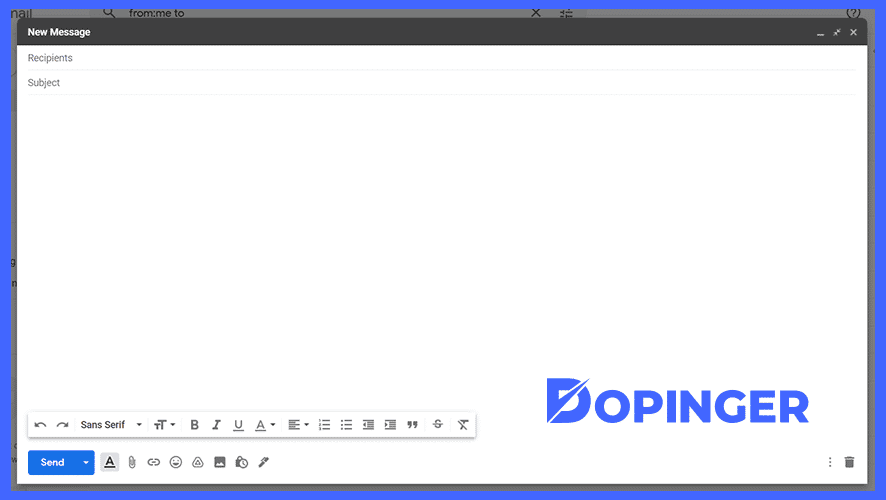
Gmail search commands will save you extra time, obviously. However, like any software, Gmail search operators may also have some disadvantages. This disadvantage is the incompatibilities that occur while Gmail search operators work with SMTP ports. SMTP ports can sometimes prevent Gmail search commands from working properly. We may make these incompatibilities clearer with an example.
Users who access their mailboxes via their Gmail accounts do not encounter any difficulties while using Gmail search commands. But, some users prefer to use an IMAP account configured through the Gmail app. That is where things start to get mixed up. In this case, Gmail search commands do not have the same success in giving exactly the right results. You may be one of these users. So, always keep that in the back of your mind while searching through your e-mails.
Gmail Search Operators Explained
They are commonly known as Gmail search commands. These commands allow you to filter your searches using the Gmail search box. These commands you’ll use in the Gmail search box can be strings of text, words, symbols, or combinations of them. One of the biggest advantages of these commands is that they allow users to perform more specific searches. To do this, all you have to do is combine these Google search commands and use them. You can also change your search criteria in a practical way by changing the commands you are using. That is the best way to find what you are looking for more easily and practically in your e-mail box. An effective way to deal with the clutter of your mailbox, isn’t it?
Google has published a list of search commands that you can use in the Gmail app. So, let’s move on to sharing our list of advanced Gmail search operators without making you wait any longer.
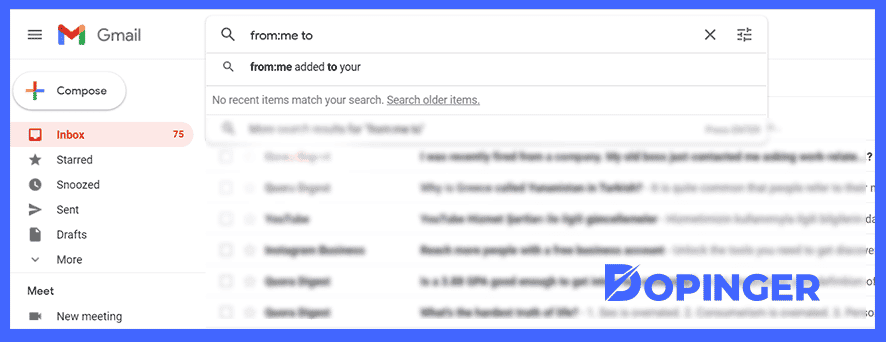
from:me to:[email protected] Search Command
Do you need a list of e-mails you have sent to a specific person through your Gmail account? That is the search command that allows you to find what you want practically and quickly. You need to enter the e-mail address of the recipient of your e-mails with this search operator. On the other hand, you may not remember the exact e-mail address of the person receiving your e-mails. In this case, it will be sufficient to enter the name of the person who receives your e-mails. However, there is another point that you should pay attention to while using the search operator in this way. In this case, the Gmail app will list everyone with this name among the users who receive mail from you.
to:me from:[email protected] Search Command
This search operator has the opposite function of the command we have just mentioned above. You can view a list of e-mails sent to you from a specific person quickly with this search command. You need to enter the e-mail address of the sender of the e-mail you are looking for similarly. If you don’t remember the address of the sender from which you received the e-mail, you can apply the same method here. You may type the sender’s name instead of the e-mail address. Again, all senders with the name you have written here will appear in the search results. Users from your Google Contacts will also appear in these search results. All you have to do is click on the person with the e-mail address you want to include in the search filter. Then the app will sort e-mails with relevant results.
cc:[email protected] / bcc:[email protected] Search Command
This search command allows you to find the e-mails you have sent to users in certain areas easily. CC stands for Carbon Copied. On the other hand, BCC stands for Blind Carbon Copied. Of course, this has something to do with our topic. Your recipient and sender searches in Gmail will not be applied to these fields. So, if you want to include these fields in the search results, you must perform your search with these search commands. You need to use these search commands in order to get the results, including the e-mails in these special fields.
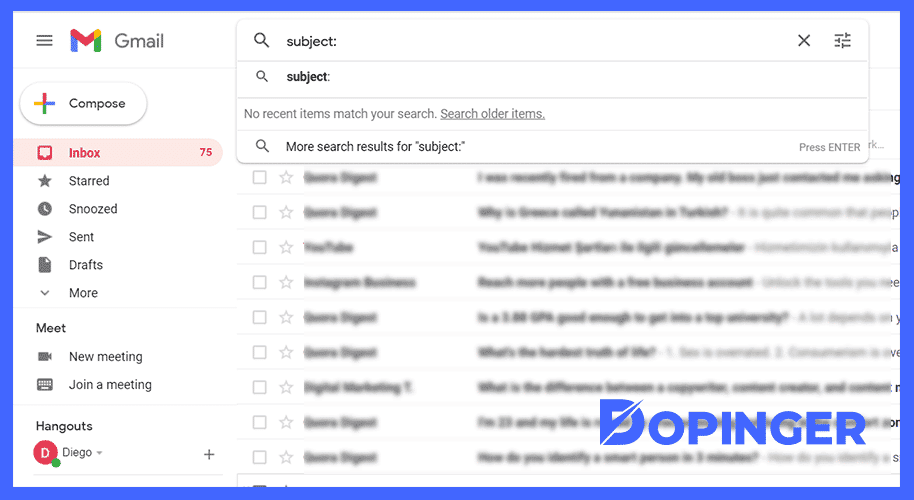
subject:exampletopic Search Command
You may not be able to remember who your e-mail came from or to whom you sent it. However, if you can remember a few words about the subject, it will be helpful too. Thus, you may find the e-mail you are looking for easily. All you have to do is enter the search command in the search box as in our title. Then, continue typing the words you can remember for the subject of the e-mail you are looking for in a few seconds.
in:anywhere Search Command
When you perform a search in your Gmail, spam mails and deleted mails will not appear in the search results. If you think that the e-mail you are looking for has been marked as spam or deleted, this command will be useful. Many Gmail users describe this search command as a lifesaver. This search operator will search all folders, including both trash and spam folders. All you have to do is enter the in:anywhere command in the Gmail search box. After entering this command, continue to write the subject, sender, or recipient name of the e-mail you are looking for. Then, the search operator will search all the folders in Gmail and sort the relevant results for you.
in:chat Search Command
This search command is quite useful for users who are still actively using the Gmail chat feature. Thanks to this Gmail search operator, you can find your messages containing certain phrases in your Gmail chat messages. To use this search command, type in:chat in the Gmail search bar. Then, leave a space and write which word or phrases are included in the chat conversation you are looking for.
label:example Search Command
Labels help you to categorize specific e-mails. This search command will be very helpful for you if you remember the label for the e-mail you’re aiming to find. One of the most important advantages of this search command is that you may combine it with other search commands easily. At this point, there is a simple situation that you should pay attention to while using this search command. You can only use tags in your individual e-mail messages. That means that this search operator will only allow you to sort results related to your individual e-mail messages. You may also use this search operator to access your e-mails in the other categories. For example, typing the label:urgent search operator allows you to access your e-mails in the urgent section.
But, what if I just want to access my e-mails with or without a label? So, let’s explain how to find e-mails with or without a label. Of course, there is a Gmail search operator that you can use in such cases. If you want to list your e-mails with any label, you can type the following search command in the search bar. Simply type has:userlabels search command. Then the app will list the e-mails you want to access in a short time. If you want to access your e-mails that do not have any labels, you can do the opposite of this process. In this case, you need to type has:nouserlabels in the Gmail search bar.
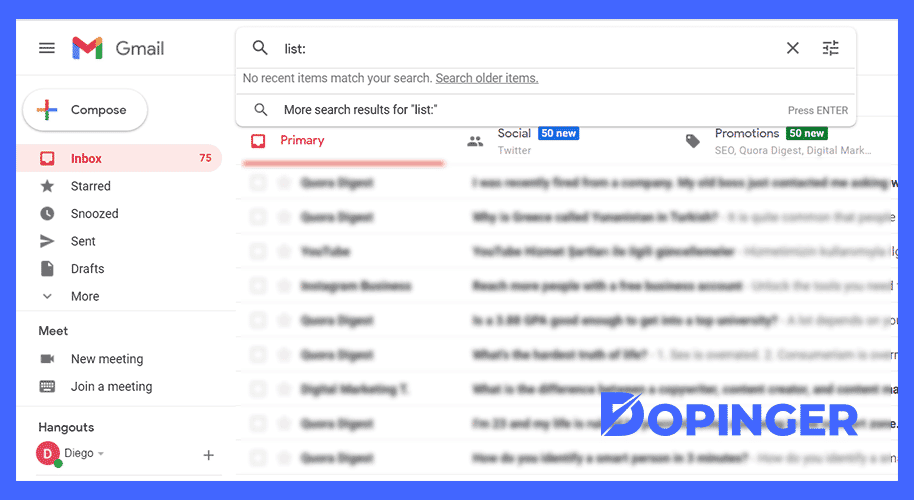
list:[email protected] Search Command
You can also access e-mails in certain e-mail lists by using this search command. To do this, first, enter the list search command. Put the colon symbol right after it. Finally, type the address of the e-mail list whose messages you want to view. Do not forget that you should write them all in a contiguous manner, as in the example in the title.
Sort your e-mails with your exact keywords.
To do this, you can start a full search using quotation marks in Gmail. This method is especially useful if the keywords in your search criteria are more than one. For example, let’s say you want to list e-mails that contain the keyword free cheeseburger. In this case, you need to type “free cheeseburger” in the search box in Gmail. In this way, you will be able to list e-mails that only contain the exact keywords you have written.
subject:examplekeyword Search Command
This search command allows you to list by keywords in the subject of the e-mails. All you have to do is enter the subject search command in the Gmail search box. Then add the colon symbol adjacently. Finally, enter the keyword that you want to include in the subject of the e-mails. Remember to write them all in a contiguous manner, as in the example in the title.
has:attachment Search Command
Thanks to this search command, you can view all e-mails containing any attachments among the e-mails in your mailbox. That is the only search command in the Gmail app that lets you filter e-mails with any file attachments. If you enter this search command and press enter, Gmail will list all your e-mails with an attachment of any file type.
If you don’t hit enter immediately after entering this search command, you may filter your search in a much more specific way. For this, enter the search command in the search box as we have specified. Then, the app will open advanced search options automatically, giving you the chance to select a specific file type. Click on any file type in the advanced search options. Then, it will sort all your e-mails that only have a file attachment of that file type. Let’s also mention that we will soon share with you the search command that will allow you to do this directly.
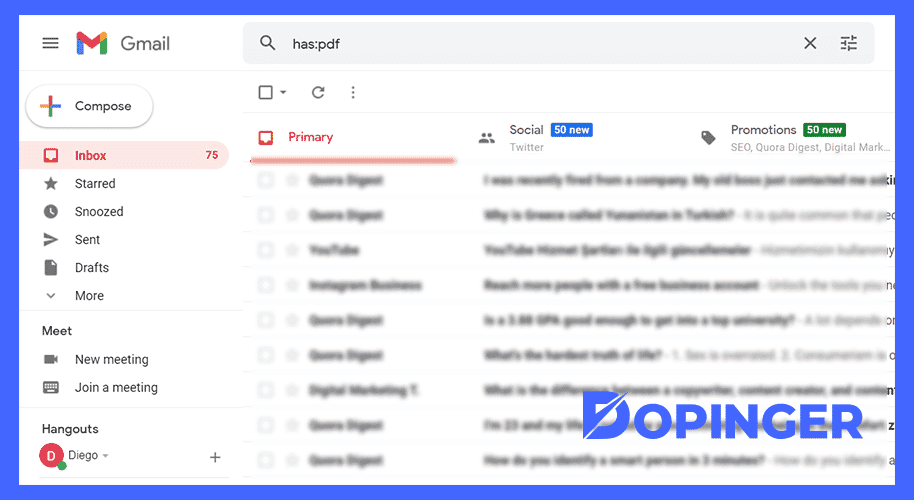
has:pdf (or any type of specific attachments) Search Command
This search command is quite useful for Gmail users who use Google Drive often. You can find many other file types, such as Google Drive attachments, with this search command. All you have to do for this is to enter the has:drive command in the Gmail search box. By using this search command, you can list your e-mails with all file types. Let’s move on to our next search command now.
You may also use the has search command for functions other than just filename searches. You can also use this search command to filter your searches for many different file types. We may list the different functions of this commonly used Gmail search operator as follows:
- has:document search operator allows you to access the e-mails with a Google Doc attachment.
- has:spreadsheet search operator allows you to find the e-mails with a Google Sheet.
- has:presentation search command helps you to find your e-mails with a Google Slade attachment.
- has:youtube search command lets you access your e-mails with a YouTube video.
Search by specific time period with Gmail search operators.
You can also perform searches based on specific time periods in the Gmail app. That is good for users who don’t have many details about the e-mails they’re looking for especially. In this case, if you can guess the date of the e-mail you are looking for, use this search command. So, let’s explain how you can use this search command to search for specific time periods. Here are these search commands and how you can use them:
- after:04.06.2021
- before:04.06.2021
- older:04.06.2021
- newer:04.06.2021
size:96M Search Command
This search command also performs a search based on attachments in your e-mails. This search command allows you to filter your e-mails with attachments of certain file size. Simply enter the size:96M search command in the Gmail search box. Then, hit the enter. There are also different search commands which you can search in file size. You may not remember the exact size of the file in the e-mail you are looking for, indeed. In this case, these search commands may be quite useful for you. In this case, you can filter the size of the file you are looking for with the smaller:100MB search command. Or vice versa, you may filter e-mails with attachments larger than a certain file size with the larger:100MB search command.
is:important Search Command
Every user marks their important mail as important. Although we do this to find our important e-mails more easily, the number of these e-mails may increase after a while. There is also a search operator you can use in these cases. So, it will be enough to type the search command we mentioned in the Gmail search bar. Then, the search operator will list all the e-mails that you have marked as important in your mailbox. But, you may also achieve this by entering the important folder of your Gmail account. So, what exactly makes this search command useful? What makes this search command useful is when you combine it with other search commands. We will share with you how to do this in the following sections of this article.
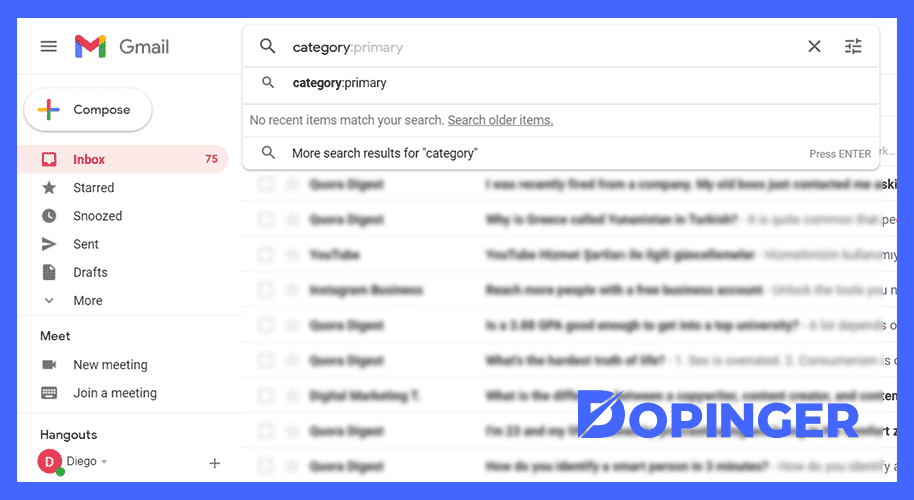
category:example Search Command
Gmail app categorizes all e-mails. These categories are Updates, Primary, Promotions, Social, and Forums. You may see them at the top of your mailbox. By using this search command, you may filter the e-mail you are using by category. If you want to find an e-mail from the primary section, you have to use the category:primary search command.
filename:example Search Command
This search command is useful if you know the exact name of the attachment file you are looking for. You may also try this as the file type. You may also try this as the file type. If you’re going to search by filename, you will need to enter the filename:example search command in the search bar. If you want to search by file type, you may search with the filename:example.txt search command.
AND NOT Search Command
This search command will allow you to perform your searches in a much more specific way. Enter the search command you want to include in your search filter first to be able to use this search command. Then, enter the AND NOT search command. Finally, enter the search command you want to exclude from the search results, leaving a space.
How to Access E-mails That Include Multiple Search Command
Sometimes using a single search command may not give you the results you need to access the e-mails you are looking for. In such cases, you may combine the two search commands very simply. This way, you can create much more specific filtering. Thus, you may ensure that the search query you perform will yield much more accurate results. In order to perform such combined searches, you must type AND in the middle of the search commands you will use. Remember that you need to type AND in uppercase as opposed to lowercase search commands. Let’s explain this with an example to make it more memorable.
You may combine multiple search commands as to:[email protected] AND list@[email protected] easily. However, at this point, it is worth noting one more issue. Instead of typing AND between these two search commands you want to combine, you may also just leave a space. That will allow you to access the same results for your searches.
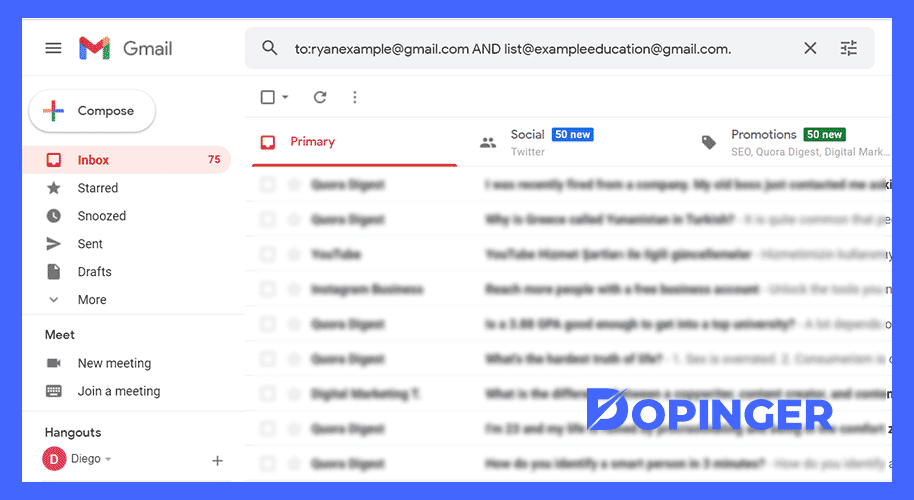
Filtering E-mails That Match Only One of Your Combined Search Commands
As we mentioned in the previous parts of this article, you may combine multiple search commands with each other. But, what should you do if only one of these two search commands can provide sufficient results for you? It’s actually pretty easy to do. All you have to do for this is to type OR between the two search commands you enter in the search box. You must type OR in uppercase as opposed to lowercase search commands. Let’s explain this with an example.
Let’s say you want to perform a search by combining the search commands to:[email protected] AND list@[email protected]. However, the fact that the e-mails you are looking for meet one of these two search filters may be enough for you. In this case, you should add OR between these two search commands, as we have mentioned. In this case, the search command you will enter in the Gmail search bar should be as follows. You should type to:[email protected] OR list@[email protected] to your Gmail search bar.
Step by Step Guide to Use the Search Command to Filter Your E-mails
- First of all, log in to your Gmail account from your browser.
- Type your search command into the search bar in your Gmail account.
- On the right side of the search bar, you will see a small sign pointing downward. Click on this gray sign. That will open the advanced search drop-down menu.
- You can customize your search to get more specific results on the advanced search drop-down menu. In this tab, we may list the filters that can help you customize your search as follows:
- From
- To
- Subject
- Has the words
- Doesn’t have
- Size (Greater than / Smaller than)
- Date within
- Search in
- Has attachment
- Do not include chats
- After entering the criteria suitable for your search in the filters above, click on the create filter option.
- Once you click on this option, one more pop-up window will appear. Here you will be faced with about a dozen more options. These options will help you determine what the filter should do. For example, you may delete the e-mails found by this filter or mark them as important. The filter will apply this command to every e-mail it finds automatically.
Gmail Search Operators, In Short
Finding the e-mails you need quickly in Gmail may often become inextricable. Many users also do not know how to deal with these situations. However, there are ways to access the e-mails you need in Gmail in a much faster and more practical way. These lifebuoys, which come to the aid of users in such cases, are called Gmail search operators. There are dozens of Gmail search operators that you can use in the Gmail app. Some of these are Gmail search syntax, some are category, and some are file type search commands. In this article, we have talked about the most used Gmail search operators for you. We have also mentioned how you can use these search commands.
If you liked this article, please take a look at our articles about Gmail. You may like our article about how to schedule an email in Gmail as well.
Frequently Asked Questions About
First of all, log in to your Gmail account. Then, type your search criteria İNto the Gmail search bar.Then, you will see the red magnifying glass button. Click on it to build an e-mail list.Wait for GMass to build your e-mail list. Then, you will encounter a Gmail Compose window.Finally, compose your subject line. Then, type your message. Now, you may send the mail by clicking on the GMass button.
Click the Settings icon after you Log in to your Gmail account. It is located on the top-right corner of your screen.Now, you will see the quick settings menu. Click on see all settings at the top of this drop-down menu.Find the Filters and blocked addresses tab. Then, simply click on it.On the screen that will appear, you can view all the search filters you have created before. Here you can edit or delete these filters.
Yes, it is possible for you to do this. You just have to type AND between each Gmail search operator, as we show in our guide.
Just add the minus (-) sign in front of your search criteria. That way, you may accomplish the Gmail search filters exclude process.
Enter your combination of Gmail search commands. Then, click the create filter option just to the right of the search bar.





No comments to show.